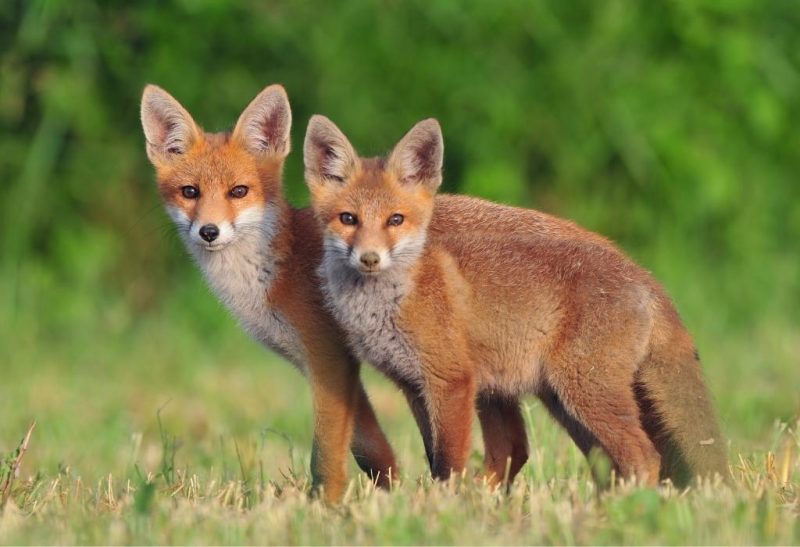Foxes’ sexual behaviors vary from monogamous to promiscuous. The courting process includes playtime between the female and male foxes, running together and giving affectionate nibbles to each other.
So, how do foxes mate? Foxes mate comparably to the way the dogs mate. They get stuck together and mate in a tail-to-tail position. This kind of position is called a copulatory lock or tie. They stay in this position typically for an hour but can go longer.
It’s also best to know that each fox species has its own mating habits. In this article, we’ll discuss these varied habits, along with the exact mating season, the reason foxes get stuck together when mating, and many more.
Table of Contents
When Is Fox Mating Season?
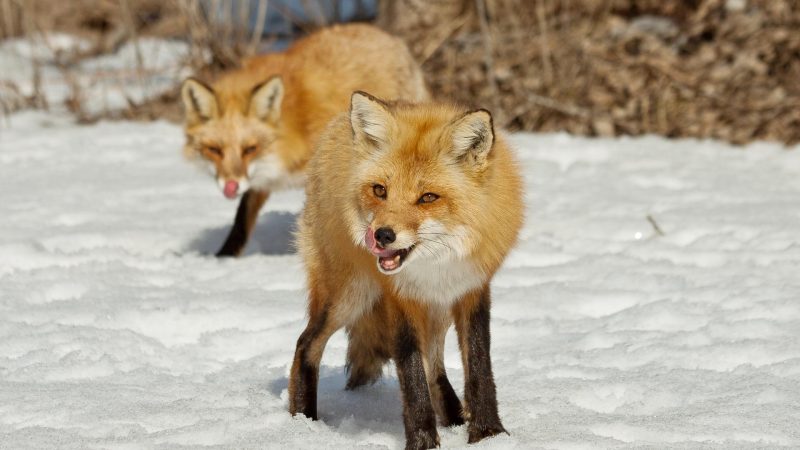
Foxes’ mating season typically occurs every January and February. Moreover, the female fox gives birth in March or April and carries her yearly litter in the den’s grass-lined chamber.
However, this usually depends on the fox species. For example, gray foxes mate from late January to May.
Meanwhile, arctic foxes mate in early March and April, while the fennec fox species, on the other hand, typically mate between January and February. In addition, the mating of red fox usually takes place from late December to March.
How Long Do Foxes Mate For?
Most often, breeding happens in January and February. During these months, males mate multiple times and stick with their partner for about three weeks—running and hunting, searching for food, and a suitable den to raise their pups.
How Do Foxes Mate?
Foxes mate like dogs. A copulatory lock or tie occurs when they become stuck together and mate in a tail-to-tail position. They usually stay in this position for an hour, although they can stay for longer.
During mating, foxes scream and bark to interact with each other. This is common every mating season and has its peak in January.
Gray Foxes Mating
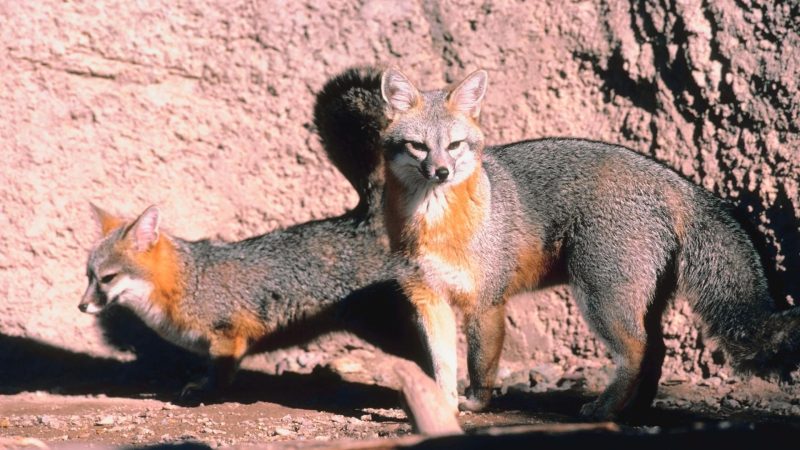
Gray foxes’ mating occurs from late January to May, with the breeding peak in March. They mimic the red fox’s habits during the courting process, which include bonding by traveling together for three weeks and looking for a suitable den to live in with their pups.
The only difference between the two foxes is that the gray fox only mates once and remains with its partner for life. Meanwhile, the red fox has promiscuous relations with several mates.
The gestation period is between 51-63 days, and the female bears an average of 3 to 5 annual litter. Most of these offspring are born in late March or April.
The newborn pups are blind, weighing approximately 86g, and are covered with fine-textured black fur. Their eyes will typically open at 9 to 12 days from birth, and weaning happens at 56 to 70 days.
Red Foxes Mating
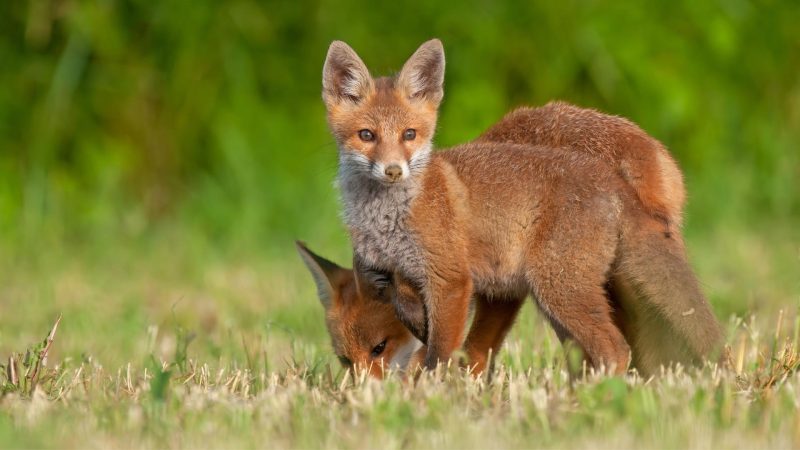
Red foxes start to breed from the end of December to late March, with matings usually occurring in January and February.
During March or April, the female fox bears her yearly litter of 1 to 11 with an average of 6 in a den with a grass-lined chamber.
These litters weigh approximately 96 grams and are covered with fine gray fur. In 9 days, their eyes will begin to open.
The gestation period is 52 days, and by 12 weeks, the young are weaned and go with their parents to search for food.
Related: Red Fox Babies | All You Need to Know!
Fennec Foxes Mating
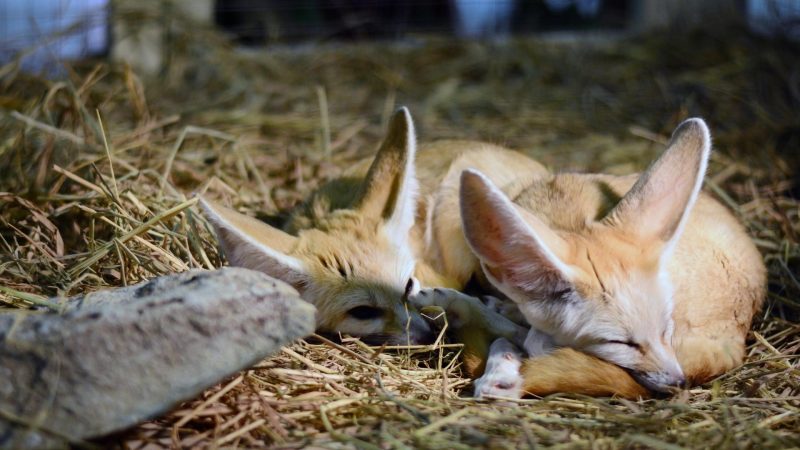
The mating of fennec foxes occurs during January and February. During this time, the males get aggressive and mark their territory using their urine.
If anyone trespasses their marked territory, they’ll attack mercilessly to protect their partner, young, and the marked area where they stay.
Moreover, the female fennec foxes give birth to 2 to 5 litter in March or April. The gestation period is 50 days, and the mother foxes stay with their young until they’re weaned after 60 to 70 days.
Arctic Foxes Mating
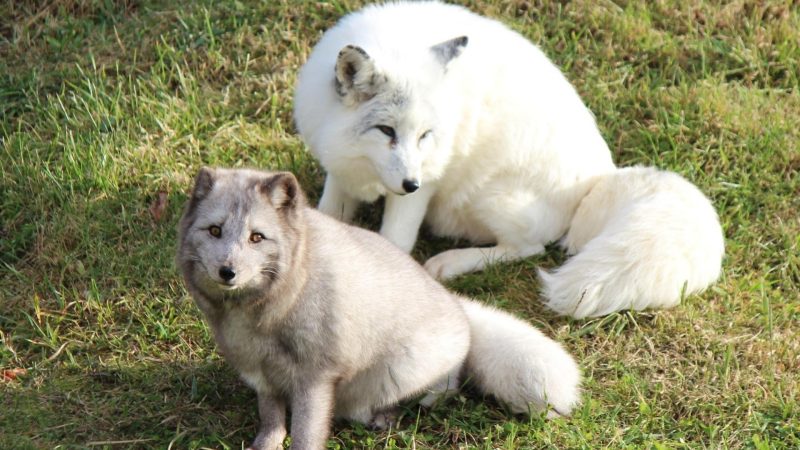
The Arctic foxes’ mating happens in early March and April. The females then give birth to the first litter from April to June and the second litter in July or August.
The gestation period is approximately 49 to 57 days. The Arctic female fox can give birth to as many as 15 pups, but typically only seven pups are born each mating season.
The young are born deaf, blind, and toothless and weigh around 57g each. These pups come out from their den when they’re two to four weeks old and are weaned around this time and start to hunt for food and wander away from home at three months old.
Why Do Foxes Scream When They Mate?
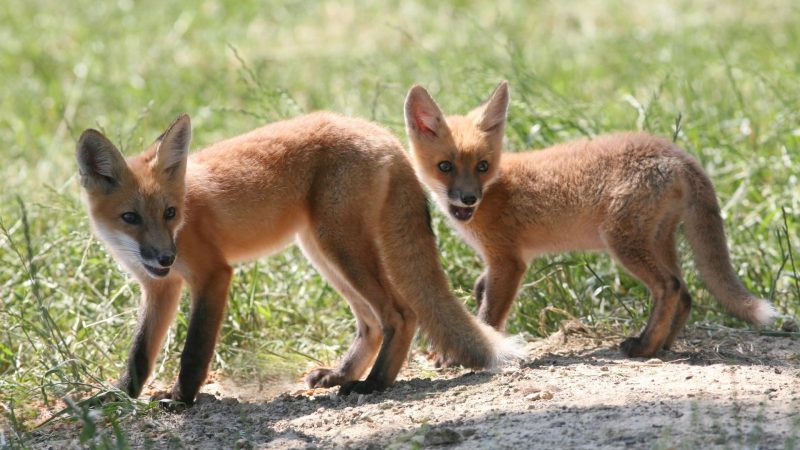
Foxes scream when they mate to communicate with each other. On top of that, they also do this to attract their partner during the mating process. The screaming is prevalent every mating season and typically at its peak every January for most fox species.
Why Do Foxes Get Stuck Together When Mating?
During mating, the bulbus glandis, a bulb-like tissue mass encircling the baculum tip, expands as it engorges with blood. This is why the pair of foxes get locked or tied together while mating.
The mating typically lasts only for a few seconds. After the ejaculation, the pair are locked together (copulatory lock) for an hour or up to 90 minutes.
The copulatory lock is the result of the contraction of the vixen’s reproductive organ and the bulbus glandis swelling, which is the tissue at the tip of the male fox’s baculum.
Frequently Asked Questions
How Long After Mating Can a Fox Give Birth?
This typically depends on the fox’s species. For example, the red fox species has the shortest gestation period of about 45 to 55 days.
This is how long the female Red foxes get pregnant before the baby foxes are born. After the gestation period, the pregnant fox will then give birth to its cubs in March since mating typically starts in January and February.
Why Do Male Foxes Get Aggressive?
The male foxes get aggressive during mating season and mark their territory with their urine to protect their pregnant partner. During this time, they also mark their territory using their urine to let other foxes know that the area is taken.
Any stranger that trespasses the marked area will get attacked mercilessly as the male foxes are sensitive during these times.
Can Foxes Mate With Domestic Dogs?
Foxes can’t mate with domestic dogs because they don’t have compatible parts to cross-breed. The two have a vast difference in the number of chromosomes.
Foxes have 34 chromosomes, while dogs have 78. Due to this incompatibility, they can’t interbreed. Furthermore, their compatibility in genus, genetics, and DNA is also lacking.
Moreover, they should also be at the very least in the same genus to produce offspring together.
Related: Can Foxes Breed With Dogs? | Information and Facts
How Often Do Foxes Mate?
Foxes typically breed only once a year, and most mating transpires in January or the beginning of February. During mating, foxes can be heard barking or screaming to attract their mate throughout the mating process.
Can Different Fox Species Mate?
Mating habits vary among fox species. Although it’s still believed that some species of fox, like the arctic foxes, are monogamous, other species like red foxes are known to have multiple partners.
There have been records of hybrid foxes resulting from the union of an arctic fox and a red fox. Hybrid foxes are rare and are born sterile—which means they can’t reproduce.
Summary
Foxes’ mating habits differ on each species, as discussed above. Nonetheless, they still get ‘stuck’ the same way—in a tail-to-tail position.
This position is called a copulatory lock or tie, and they usually get stuck in this position for at least an hour. Though most foxes appear to be notably similar, their behavior patterns differ from one another, particularly when mating.
You can refer to the content above for the differences in the mating habits of each fox species.
List of Sources
Kimoto, Y., Ito, Y. (1988). Functional innervation patterns in the corpus spongiosum and glans in the dog. BJU International.
Saunders, D. A. (1988). Gray Fox. SUNY College of Environmental Science and Forestry.
Saunders, D. A. (1988). Red Fox. SUNY College of Environmental Science and Forestry.
Arctic Fox (Alopex lagopus). Alaska Department of Fish and Game.
Sacks, B. N., Moore, M., Statham, M. J., Wittmer, H. U. (2011). A restricted hybrid zone between native and introduced red fox (Vulpes vulpes) populations suggests reproductive barriers and competitive exclusion. Molecular Ecology – Wiley Online Library.
